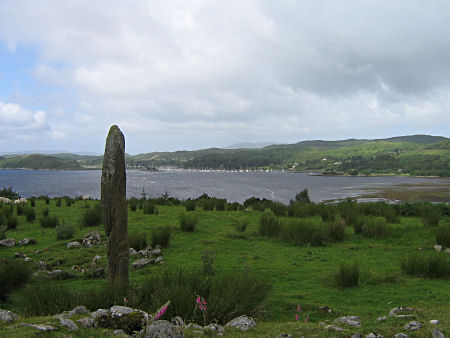
Standing stone seen from the cairn on the way to Oban

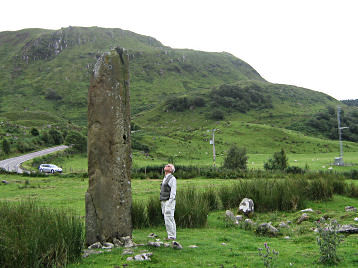 |
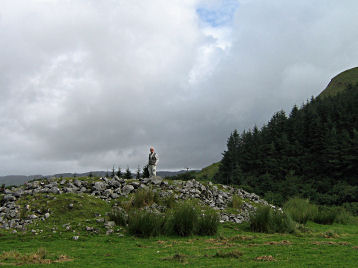 |
| On our way to Oban, we passed by a standing stone and a cairn |
Here is John on top of the cairn right next to the standing stone |
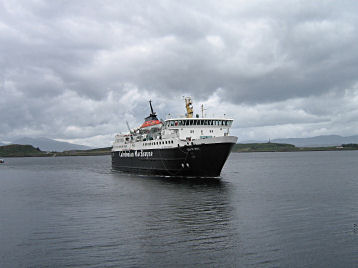 |
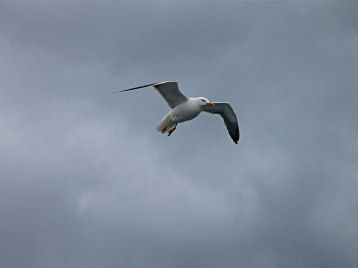 |
| Our ferry is arriving into the harbor of Oban | A seagull hovers above the stern of the boat, awaiting handouts |
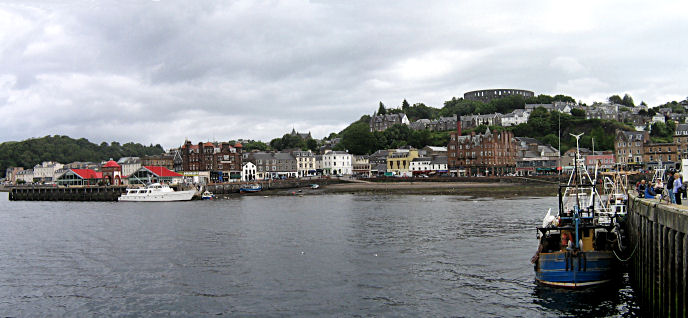 |
| Looking back at Oban as we're leaving for Mull |
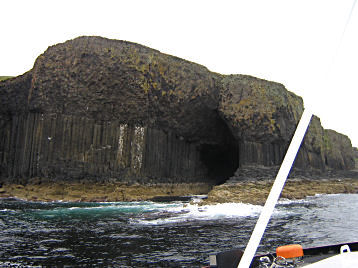 |
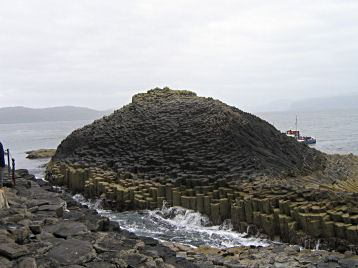 |
| The skipper brought the boat to the entrance of Fingal's Cave before leaving us off at the landing | The very striking hexagonal rock formations which very much resemble the Giant's Causeway on the northern coast of Ireland |
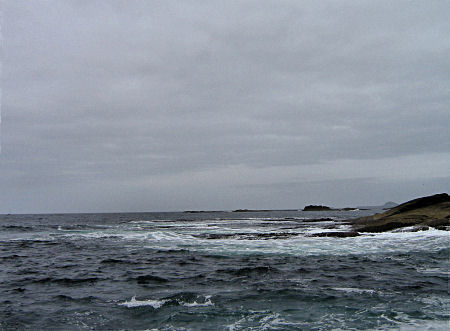 |
| View west from Staffa over a number of smaller islands |
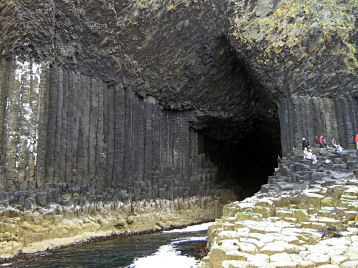 |
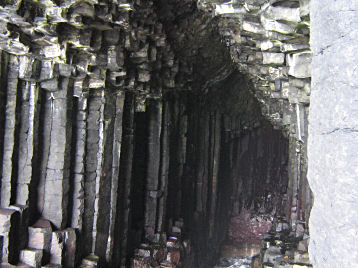 |
| The entrance to Fingal's cave as we approach it on the rocks | The cathedral like interior of Fingal's Cave where we stepped on a ledge across from the rock formations seen here. |
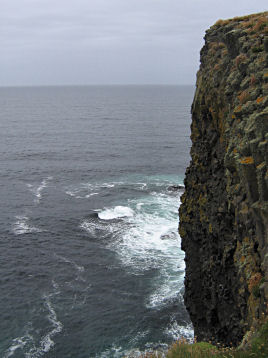 |
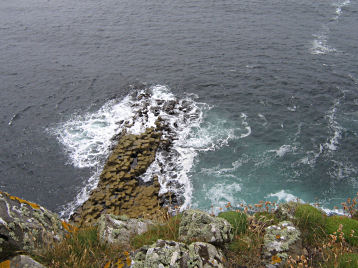 |
| Profile of a vertical rock seen from the top of the island | Looking down at the spit of land where we'd walked out a while before on the hexagonal stones that are found all along the sides of the island. The tide is coming in here. |
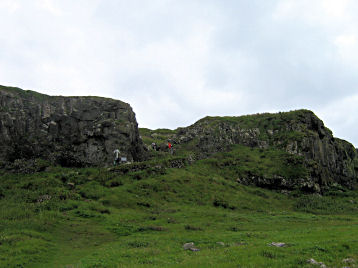 |
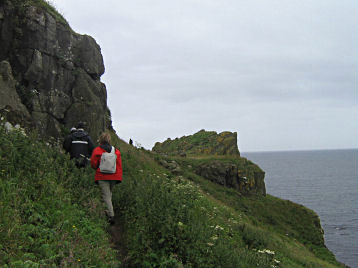 |
| The path leading up to the bird fairyland | Some sort of red-backed Swedish bird, not to be found in bird book |
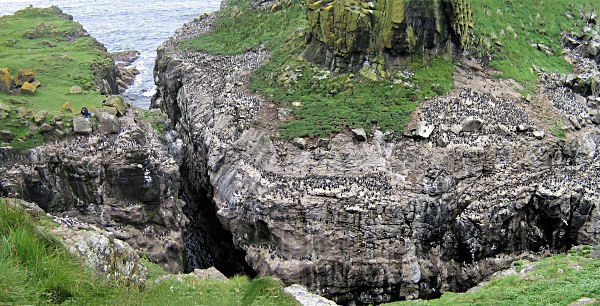 |
| Thousands of birds - guillemots, shags, razorbills, puffins, gannets and kittywakes |
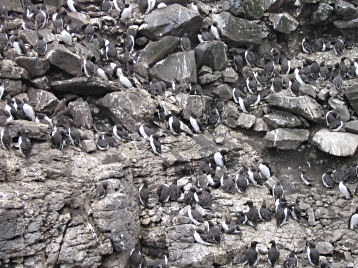 |
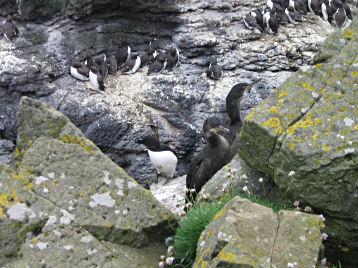 |
| More of a close-up of the masses of guillemots | Two shags in front, a razorbill just behind and loads of guillemots in the background |
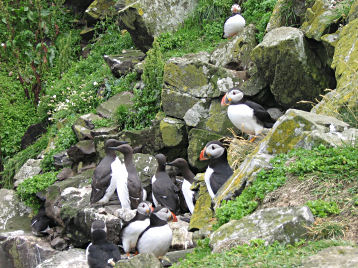 |
 |
| A puffin family (5 or 6) and guillemots | A puffin, fish in beak |
 |
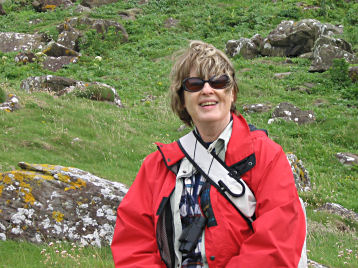 |
| Proud and beautiful razorbill (two young ones behind and below?) | A wind-blown Siv on her way back to the boat landing after at least one hour of fascinating bird watching. |
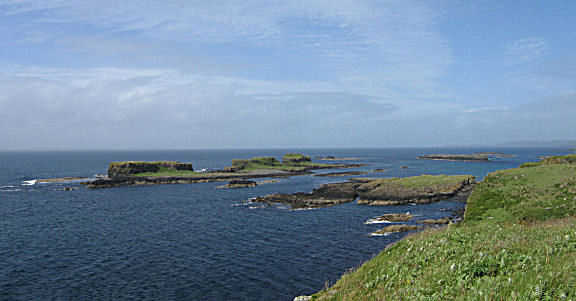 |
| The northwestern coast of Lunga on our way back from the bird paradise |
 |
| Back on Mull. The sky had cleared up some after a somewhat gray morning, but clouds or no clouds, it had been a wonderful and eventful day. |